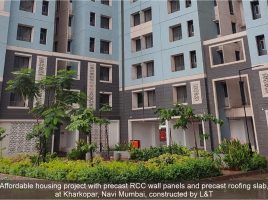Reducing Carbon Emissions with Green Technologies

The past five years have been the warmest ever for the world, a stark reminder of the urgent need for climate action. The intensifying heat directly results from rising greenhouse gas emissions, which are driving climate change and its devastating impacts. These include more frequent and severe weather events, rising sea levels, and disruptions to ecosystems and livelihoods. The urgency to address these issues is underscored by the fact that global temperatures could rise beyond 3 °Celsius this century without immediate action, exacerbating the challenges faced by vulnerable populations worldwide.
Today, academic research underscores the potential of green technologies in reducing carbon emissions and mitigating the worst effects of climate change. Rising carbon emissions and temperatures are projected to have profound consequences on the global economy. Achieving net-zero emissions is crucial for a sustainable future. This necessitates a coordinated global effort to transition to green technologies, including renewable energy sources, improving energy efficiency, and implementing sustainable technological practices across all sectors.
The Development Alternatives Group plays a pivotal role in addressing the global challenge of climate change. It mandates the use of various technologies and innovative approaches being developed and implemented to reduce carbon emissions. In this issue, the authors have reviewed and discussed some unique technologies and perspectives for reducing carbon emissions.
Traditional brick-making processes are energy-intensive and contribute significantly to carbon emissions. Non-fired brick-making technology offers a sustainable alternative: using geopolymer binders and construction waste to produce bricks without the need for high-temperature kilns. This method reduces emissions and repurposes waste materials, contributing to a circular economy. In Bihar, the innovative use of pond ash—a byproduct of coal combustion—has shown promise in sustainable brickmaking. By incorporating pond ash into the brick-making process, local manufacturers can reduce the reliance on traditional clay and minimise carbon emissions. This approach addresses waste management issues and supports local economies by providing a cost-effective building material.

The other side of the spectrum covers artificial intelligence (AI), revolutionising how we approach carbon emission reduction. AI-based decision support systems can optimise energy use, forecast renewable energy production, and manage smart grids. By analysing vast amounts of data, AI can provide actionable insights for improving energy efficiency and reducing emissions across various sectors. Heavy industry, aviation, and shipping sectors are notoriously difficult to decarbonise due to their reliance on high-energy processes and fossil fuels. Significant investments in climate finance are needed to develop and deploy technologies like carbon capture, utilisation, and storage (CCUS), hydrogen-based fuels, and advanced bioenergy. These investments are crucial for achieving emission targets and transitioning to a low-carbon economy.
The transition to a low-carbon future requires a multi-faceted approach, combining technological innovation with supportive policies and societal changes. The urgency of these policies cannot be overstated. Governments, industries, and individuals all have roles to play in this transition. By investing in and adopting these technologies, we can move closer to a sustainable and carbon-neutral future.
The call for innovations in green technologies has never been more imminent. This includes advancements in other key areas, such as clean energy production, storage, and sustainable manufacturing processes. Green technology innovation will help growing populations reduce resource consumption and emissions during production, contributing to a more sustainable economy.
The views expressed in the article are those of the authors and not necessarily those of Development Alternatives.
This blog first appeared as an editorial in Development Alternatives Newsletter September, 2024 https://devalt.org/newsletter/53






Leave a Reply